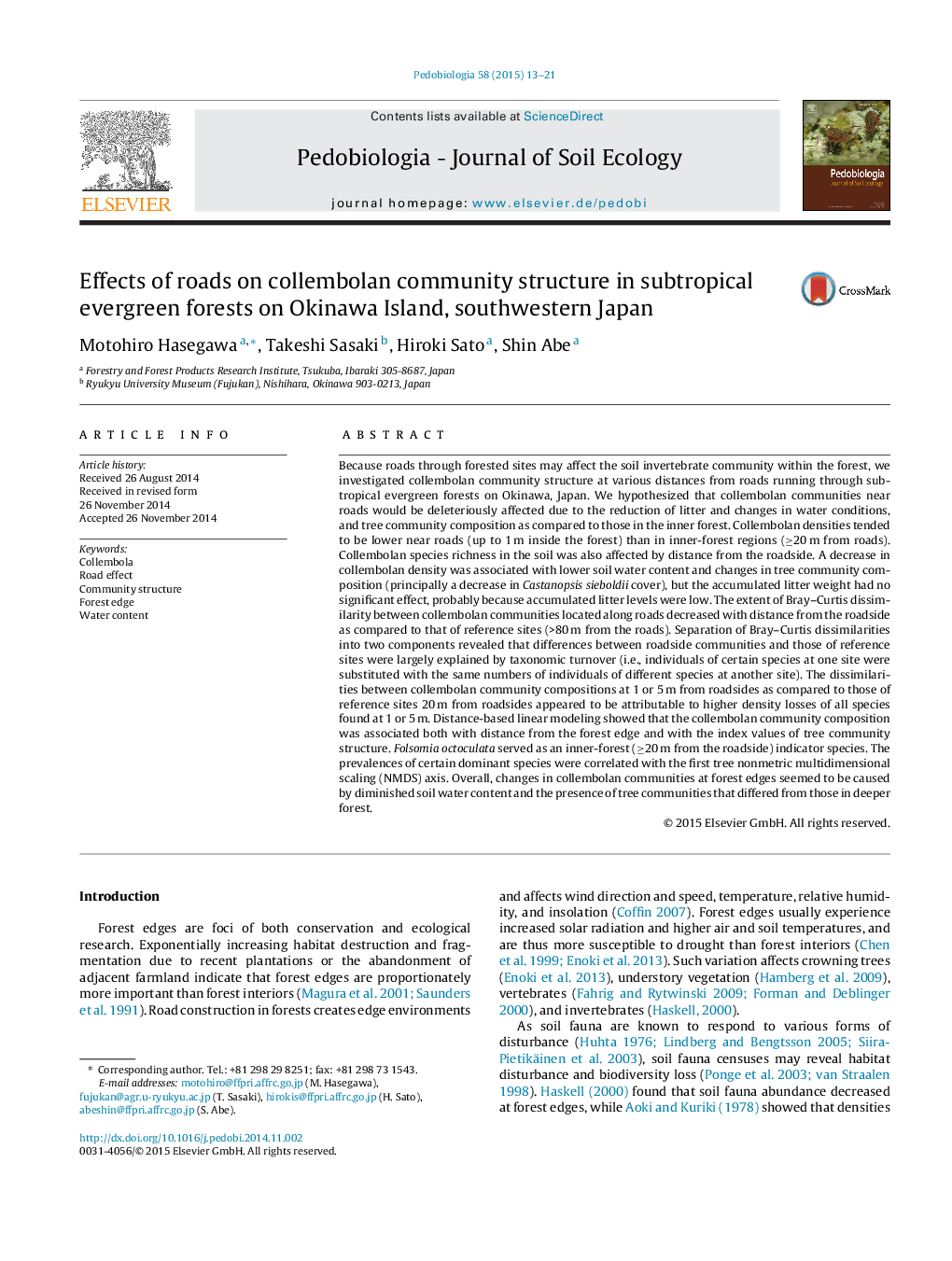| کد مقاله | کد نشریه | سال انتشار | مقاله انگلیسی | نسخه تمام متن |
|---|---|---|---|---|
| 2061018 | 1076428 | 2015 | 9 صفحه PDF | دانلود رایگان |
• Collembolan density and species richness decreased at forest edges than inside the forest.
• Collembolan community structures near roads differed from those of reference communities.
• Collembolan communities were affected by soil water content and tree communities.
Because roads through forested sites may affect the soil invertebrate community within the forest, we investigated collembolan community structure at various distances from roads running through subtropical evergreen forests on Okinawa, Japan. We hypothesized that collembolan communities near roads would be deleteriously affected due to the reduction of litter and changes in water conditions, and tree community composition as compared to those in the inner forest. Collembolan densities tended to be lower near roads (up to 1 m inside the forest) than in inner-forest regions (≥20 m from roads). Collembolan species richness in the soil was also affected by distance from the roadside. A decrease in collembolan density was associated with lower soil water content and changes in tree community composition (principally a decrease in Castanopsis sieboldii cover), but the accumulated litter weight had no significant effect, probably because accumulated litter levels were low. The extent of Bray–Curtis dissimilarity between collembolan communities located along roads decreased with distance from the roadside as compared to that of reference sites (>80 m from the roads). Separation of Bray–Curtis dissimilarities into two components revealed that differences between roadside communities and those of reference sites were largely explained by taxonomic turnover (i.e., individuals of certain species at one site were substituted with the same numbers of individuals of different species at another site). The dissimilarities between collembolan community compositions at 1 or 5 m from roadsides as compared to those of reference sites 20 m from roadsides appeared to be attributable to higher density losses of all species found at 1 or 5 m. Distance-based linear modeling showed that the collembolan community composition was associated both with distance from the forest edge and with the index values of tree community structure. Folsomia octoculata served as an inner-forest (≥20 m from the roadside) indicator species. The prevalences of certain dominant species were correlated with the first tree nonmetric multidimensional scaling (NMDS) axis. Overall, changes in collembolan communities at forest edges seemed to be caused by diminished soil water content and the presence of tree communities that differed from those in deeper forest.
Journal: Pedobiologia - Volume 58, Issue 1, January 2015, Pages 13–21
